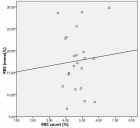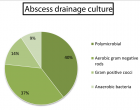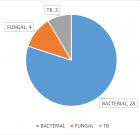Abstract
Observational Study
Prescribing Inertia or Not? Quantitative Investigation of Loop Diuretics Prescribing after Palliative Care Consultation among Patients with Heart Failure
Zidong Zhang*, William Frick, Leslie Hinyard and Divya S Subramaniam
Published: 27 August, 2024 | Volume 9 - Issue 2 | Pages: 135-141
Purpose: Loop Diuretics (LD) are the first-line pharmacotherapy to address Heart Failure (HF)-associated edema and dyspnea. However, LD causes frequent urinary, resulting in inconvenience and possibly undermining the quality of life. While prescription adjustment is an essential part of Palliative Care Consultation (PCC), it remains unclear how PCC affects the deprescribing of diuretics for adults with HF.
Methods: We conducted a pre-post analysis of the percentage of HF patients who were prescribed LD in a national Electronic Health Record (EHR) database 12 months before and after the first PCC. The difference in prescription rates between the periods was determined. Adjusted associations of post-PCC LD prescription with pre-PCC LD prescription and patient’s characteristics, insurance, provider type, and clinical factors were quantified.
Results: From 2010 to 2018, 5,969 patients with newly diagnosed HF received at least one PCC, among whom 2,539 (42.5%) were prescribed LD before and 1,552 (26.0%) after their first PCC. Despite a decrease in LD prescription rate encompassing the date of PCC, post-PCC LD prescribing was strongly associated with pre-PCC prescribing (aOR[95%CI] 3.2[2.8,3.7]) and varied by age at first PCC, year of HF diagnosis (aOR[95%CI] 2.1[1.9,2.4]) and months from HF diagnosis to first PCC. While our finding demonstrates reduced polypharmacy associated with PCC, the strong association between pre- and post-PCC indicates reverse therapeutic inertia. Future research should investigate the benefits and costs of polypharmacy among specific patient groups to help develop personalized treatment for HF.
Read Full Article HTML DOI: 10.29328/journal.jccm.1001194 Cite this Article Read Full Article PDF
Keywords:
Heart failure; Polypharmacy; Palliative care; Deprescribing; Diuretics; Clinical inertia
References
- Warraich HJ, Wolf SP, Mentz RJ, Rogers JG, Samsa G, Kamal AH. Characteristics and Trends Among Patients With Cardiovascular Disease Referred to Palliative Care. JAMA Netw Open. 2019;2(5):e192375. Available from: https://doi.org/10.1001/jamanetworkopen.2019.2375
- McIlvennan CK, Allen LA. Palliative care in patients with heart failure. BMJ. 2016;14;353:i1010.. Available from: https://doi.org/10.1136/bmj.i1010
- Goldberg RJ, Spencer FA, Szklo-Coxe M, Tisminetzky M, Yarzebski J, Lessard D, et al. Symptom presentation in patients hospitalized with acute heart failure. Clin Cardiol. 2010;33(6). Available from: https://doi.org/10.1002/clc.20627
- Heidenreich PA, Bozkurt B, Aguilar D, Allen LA, Byun JJ, Colvin MM, et al. 2022 AHA/ACC/HFSA guideline for the management of heart failure: A report of the American College of Cardiology/American Heart Association Joint Committee on Clinical Practice Guidelines. Circulation. 2022;145(18):e895-e1032. Available from: https://doi.org/10.1161/cir.0000000000001063
- Faselis C, Arundel C, Patel S, Lam PH, Gottlieb SS, Zile MR, et al. Loop diuretic prescription and 30-day outcomes in older patients with heart failure. J Am Coll Cardiol. 2020;76(6):669-679. Available from: https://doi.org/10.1016/j.jacc.2020.06.022
- McGuinty C, Leong D, Weiss A, MacIver J, Kaya E, Hurlburt L, et al. Heart failure: A palliative medicine review of disease, therapies, and medications with a focus on symptoms, function, and quality of life. J Pain Symptom Manage. 2020;59(5):1127-46.e1. Epub 2019 Dec 24. Available from: https://doi.org/10.1016/j.jpainsymman.2019.12.357
- Brunner-La Rocca HP, Linssen GC, Smeele FJ, van Drimmelen AA, Schaafsma HJ, Westendorp PH, et al. Contemporary drug treatment of chronic heart failure with reduced ejection fraction: The CHECK-HF registry. JACC Heart Fail. 2019;7(1):13-21. Available from: https://doi.org/10.1016/j.jchf.2018.10.010
- Giugliano D, Maiorino MI, Bellastella G, Esposito K. Clinical inertia, reverse clinical inertia, and medication non-adherence in type 2 diabetes. J Endocrinol Invest. 2019;42(5):495-503. Available from: https://doi.org/10.1007/s40618-018-0951-8
- Girerd N, Von Hunolstein JJ, Pellicori P, Bayés-Genís A, Jaarsma T, Lund LH, et al. Therapeutic inertia in the pharmacological management of heart failure with reduced ejection fraction. ESC Heart Fail. 2022;9(4):2063-9. Available from: https://doi.org/10.1002/ehf2.13929
- Phillips LS, Branch WT, Cook CB, Doyle JP, El-Kebbi IM, Gallina DL, et al. Clinical inertia. Ann Intern Med. 2001;135(9):825-834. Available from: https://doi.org/10.7326/0003-4819-135-9-200111060-00012
- Mohottige D, Manley HJ, Hall RK. Less is more: Deprescribing medications in older adults with kidney disease: A review. Kidney360. 2021;2(9):1510-1522. Available from: https://doi.org/10.34067%2FKID.0001942021
- Verhestraeten C, Heggermont WA, Maris M. Clinical inertia in the treatment of heart failure: A major issue to tackle. Heart Fail Rev. 2021;26(6):1359-1370. Available from: https://link.springer.com/article/10.1007/s10741-020-09979-z
- Swat SA, Helmkamp LJ, Tietbohl C, Thompson JS, Fitzgerald M, McIlvennan CK, et al. Clinical inertia among outpatients with heart failure: Application of treatment nonintensification taxonomy to EPIC-HF trial. JACC Heart Fail. 2023;11(11):1579-1591. Available from: https://doi.org/10.1016/j.jchf.2023.06.022
- McDonagh TA, Metra M, Adamo M, Gardner RS, Baumbach A, Böhm M, et al. 2021 ESC guidelines for the diagnosis and treatment of acute and chronic heart failure: Developed by the Task Force for the diagnosis and treatment of acute and chronic heart failure of the European Society of Cardiology (ESC) with the special contribution of the Heart Failure Association (HFA) of the ESC. Eur Heart J. 2021;42(36):3599-3726. Available from: https://doi.org/10.1093/eurheartj/ehab368
- Warraich HJ, Rogers JG, Dunlay SM, Hummel E, Mentz RJ. Top ten tips for palliative care clinicians caring for heart failure patients. J Palliat Med. 2018;21(11):1646-1650. Available from: https://doi.org/10.1089/jpm.2018.0453
- Hill L, Prager Geller T, Baruah R, Beattie JM, Boyne J, de Stoutz N, et al. Integration of a palliative approach into heart failure care: a European Society of Cardiology Heart Failure Association position paper. Eur J Heart Fail. 2020;22(12):2327-2339. Available from: https://doi.org/10.1002/ejhf.1994
- Khan MZ, Khan MU, Munir MB. Trends and disparities in palliative care encounters in acute heart failure admissions; insight from National Inpatient Sample. Cardiovasc Revasc Med. 2021;23:52-56. Available from: https://doi.org/10.1016/j.carrev.2020.08.024
- Hua M, Li G, Clancy C, Morrison RS, Wunsch H. Validation of the V66.7 code for palliative care consultation in a single academic medical center. J Palliat Med. 2017;20(4):372-377. Available from: https://doi.org/10.1089/jpm.2016.0363
- Feder SL, Redeker NS, Jeon S, Schulman-Green D, Womack JA, Tate JP, et al. Validation of the ICD-9 diagnostic code for palliative care in patients hospitalized with heart failure within the Veterans Health Administration. Am J Hosp Palliat Med. 2018;35(7):959-965. Available from: https://doi.org/10.1177/1049909117747519
- Stubbs JM, Assareh H, Achat HM, Greenaway S, Muruganantham P. Verification of administrative data to measure palliative care at terminal hospital stays. Health Inf Manag J. 2023;52(1):28-36. Available from: https://doi.org/10.1177/1833358320968572
- Zhang Z, Lovell A, Subramaniam DS, Hinyard L. The impact of palliative care consultation on aggressive medical interventions in end-of-life among patients with metastatic breast cancer: Insights from the U.S. National Patient Sample. J Palliat Care. 2024;0(0):08258597241253933. Available from: https://doi.org/10.1177/08258597241253933
- Charlson ME, Pompei P, Ales KL, MacKenzie CR. A new method of classifying prognostic comorbidity in longitudinal studies: development and validation. J Chronic Dis. 1987;40(5):373-383. Available from: https://doi.org/10.1016/0021-9681(87)90171-8
- Quan H, Sundararajan V, Halfon P, Fong A, Burnand B, Luthi JC, et al. Coding algorithms for defining comorbidities in ICD-9-CM and ICD-10 administrative data. Med Care. 2005;43(11):1130-1139. Available from: https://doi.org/10.1097/01.mlr.0000182534.19832.83
- SAS Institute Inc. SAS/STAT® 15.3 User’s Guide: SAS Institute, Inc.; Cary, NC, USA; 2023. Available from: https://documentation.sas.com/doc/en/pgmsascdc/9.4_3.5/statug/titlepage.htm
- Buckley LF, Carter DM, Matta L, Cheng JW, Stevens C, Belenkiy RM, et al. Intravenous diuretic therapy for the management of heart failure and volume overload in a multidisciplinary outpatient unit. JACC Heart Fail. 2016;4(1):1-8. Available from: https://doi.org/10.1016/j.jchf.2015.06.017
- Felker GM, Lee KL, Bull DA, Redfield MM, Stevenson LW, Goldsmith SR, et al. Diuretic strategies in patients with acute decompensated heart failure. N Engl J Med. 2011;364(9):797-805. Available from: https://doi.org/10.1056/nejmoa1005419
- Granger BB, Tulsky JA, Kaufman BG, Clare RM, Anstrom K, Mark DB, et al. Polypharmacy in palliative care for advanced heart failure: The PAL-HF experience. J Card Fail. 2022;28(2):334-338. Available from: https://doi.org/10.1016/j.cardfail.2021.08.021
- Ginzburg R, Hilas O. Addressing clinical and therapeutic inertia through comprehensive medication review. Sr Care Pharm. 2022;37(9):412-420. Available from: https://doi.org/10.4140/tcp.n.2022.412
- Lebeau JP, Cadwallader JS, Aubin-Auger I, Mercier A, Pasquet T, Rusch E, et al. The concept and definition of therapeutic inertia in hypertension in primary care: a qualitative systematic review. BMC Fam Pract. 2014;15(1):130. Available from: https://doi.org/10.1186/1471-2296-15-130
- Reach G. Simplistic and complex thought in medicine: the rationale for a person-centered care model as a medical revolution. Patient Prefer Adherence. 2016;10:449-457. Available from: https://doi.org/10.2147%2FPPA.S103007
- Erhardt L, Komajda M, Hobbs FDR, Soler-Soler J. Cardiologists' awareness and perceptions of guidelines for chronic heart failure: The Address Your Heart survey. Eur J Heart Fail. 2008;10(10):1020-1025. Available from: https://doi.org/10.1016/j.ejheart.2008.08.001
- Calvin JE, Shanbhag S, Avery E, Kane J, Richardson D, Powell L. Adherence to evidence-based guidelines for heart failure in physicians and their patients: Lessons from the Heart Failure Adherence Retention Trial (HART). Congest Heart Fail. 2012;18(2):73-78. Available from: https://doi.org/10.1111/j.1751-7133.2011.00263.x
- Teixeira A, Arrigo M, Tolppanen H, Gayat E, Laribi S, Metra M, et al. Management of acute heart failure in elderly patients. Arch Cardiovasc Dis. 2016;109(6):422-430. Available from: https://doi.org/10.1016/j.acvd.2016.02.002
- Kavalieratos D, Gelfman LP, Tycon LE, Riegel B, Bekelman DB, Ikejiani DZ, et al. Palliative care in heart failure: Rationale, evidence, and future priorities. J Am Coll Cardiol. 2017;70(15):1919-1930. Available from: https://doi.org/10.1016/j.jacc.2017.08.036
- Frayne SM, Miller DR, Sharkansky EJ, Jackson VW, Wang F, Halanych JH, et al. Using administrative data to identify mental illness: What approach is best? Am J Med Qual. 2010;25(1):42-50. Available from: https://doi.org/10.1177/1062860609346347
- Solberg LI, Engebretson KI, Sperl-Hillen JM, Hroscikoski MC, O'Connor PJ. Are claims data accurate enough to identify patients for performance measures or quality improvement? The case of diabetes, heart disease, and depression. Am J Med Qual. 2006;21(4):238-245. Available from: https://doi.org/10.1177/1062860606288243
- Chang YK, Kaplan H, Geng Y, Mo L, Philip J, Collins A, et al. Referral criteria to palliative care for patients with heart failure: A systematic review. Circ Heart Fail. 2020;13(9):e006881. Available from: https://doi.org/10.1161/circheartfailure.120.006881
- Chang YK, Philip J, Allen LA, McClung JA, Hui D. Criteria that promote timely referral to specialist palliative care for patients with advanced heart failure. J Card Fail. 2024;30(1):85-90. Available from: https://doi.org/10.1016/j.cardfail.2023.07.011
- Messias E, Salas J, Scherrer JF. Patient characteristics prior to suicide attempts among Hispanics compared to non-Hispanic whites in the United States. J Affect Disord. 2022;308:130-133. Available from: https://doi.org/10.1016/j.jad.2022.04.068
- Scherrer JF, Salas J, Miller-Matero LR, Sullivan MD, Ballantyne JC, Debar L, et al. Long-term prescription opioid users' risk for new-onset depression increases with frequency of use. Pain. 2022;163(8):1581-1589. Available from: https://doi.org/10.1097/j.pain.0000000000002547
- Cooke CR, Joo MJ, Anderson SM, Lee TA, Udris EM, Johnson E, et al. The validity of using ICD-9 codes and pharmacy records to identify patients with chronic obstructive pulmonary disease. BMC Health Serv Res. 2011;11(1):37. Available from: https://doi.org/10.1186/1472-6963-11-37
- Gothe H, Rajsic S, Vukicevic D, Schoenfelder T, Jahn B, Geiger-Gritsch S, et al. Algorithms to identify COPD in health systems with and without access to ICD coding: A systematic review. BMC Health Serv Res. 2019;19(1):737. Available from: https://doi.org/10.1186/s12913-019-4574-3
Figures:
Similar Articles
-
Cardiovascular damage during lupus in black African subjectsYaméogo NV*,Tougouma SJ-B,Zabsonré J,Kologo KJ,Tiemtoré WS,Kagambèga LJ,Bagbila WPAH, Traoré A,Samadoulougou AK,Zabsonré P. Cardiovascular damage during lupus in black African subjects. . 2018 doi: 10.29328/journal.jccm.1001024; 3: 031-034
-
An observational study of the occurrence of anxiety, depression and self-reported quality of life 2 years after myocardial infarctionCatrin Henriksson,Mona-Lisa Wernroth,Christina Christersson*. An observational study of the occurrence of anxiety, depression and self-reported quality of life 2 years after myocardial infarction. . 2018 doi: 10.29328/journal.jccm.1001027; 3: 052-063
-
Endogenous sensitizer of beta-adrenergic receptors (ESBAR) and its analogs (review)Victor Tsirkin*,Alexander Nozdrachev,Elena Sizova,Tatyana Polezhaeva,Svetlana Khlybova,Marina Morozova,Andrew Trukhin,Julia Korotaeva,Grigory Khodyrev. Endogenous sensitizer of beta-adrenergic receptors (ESBAR) and its analogs (review). . 2018 doi: 10.29328/journal.jccm.1001028; 3: 064-078
-
Cardiomyopathies - The special entity of myocarditis and inflammatory cardiomyopathyFelicitas Escher*,Uwe Kühl,Dirk Lassner,Heinz-Peter Schultheiss. Cardiomyopathies - The special entity of myocarditis and inflammatory cardiomyopathy. . 2019 doi: 10.29328/journal.jccm.1001041; 4: 053-070
-
Preclinical stiff heart is a marker of cardiovascular morbimortality in apparently healthy populationCharles Fauvel,Michael Bubenheim,Olivier Raitière,Charlotte Vallet,Nassima Si Belkacem,Fabrice Bauer*. Preclinical stiff heart is a marker of cardiovascular morbimortality in apparently healthy population. . 2019 doi: 10.29328/journal.jccm.1001045; 4: 083-089
-
Late discover of a traumatic cardiac injury: Case reportBenlafqih C,Bouhdadi H*,Bakkali A,Rhissassi J,Sayah R,Laaroussi M. Late discover of a traumatic cardiac injury: Case report. . 2019 doi: 10.29328/journal.jccm.1001048; 4: 100-102
-
Role of novel cardiac biomarkers for the diagnosis, risk stratification, and prognostication among patients with heart failureJennifer Miao,Joel Estis,Yan Ru Su,John A Todd,Daniel J Lenihan*. Role of novel cardiac biomarkers for the diagnosis, risk stratification, and prognostication among patients with heart failure. . 2019 doi: 10.29328/journal.jccm.1001049; 4: 103-109
-
The effect of anemia on serum hepcidin levels in patients with heart failureBetul Borku Uysal*,Feray Akbas,Esma Altunoglu,Gulhan Ipek Denız,Duygu Uysal,Harun Uysal,Hanife Usta Atmaca,Yasin Yuksel,Hale Aral,Guven Cetın,Cem Ar M,Fusun Erdenen. The effect of anemia on serum hepcidin levels in patients with heart failure. . 2019 doi: 10.29328/journal.jccm.1001059; 4: 159-163
-
Do beta adrenoceptor blocking agents provide the same degree of clinically convincing morbidity and mortality benefits in patients with chronic heart failure? A literature reviewMartin Mumuni Danaah Malick*. Do beta adrenoceptor blocking agents provide the same degree of clinically convincing morbidity and mortality benefits in patients with chronic heart failure? A literature review. . 2019 doi: 10.29328/journal.jccm.1001063; 4: 182-186
-
Left ventricular ejection fraction and contrast induced acute kidney injury in patients undergoing cardiac catheterization: Results of retrospective chart reviewFiras Ajam*,Obiora Maludum,Nene Ugoeke,Hetavi Mahida,Anas Alrefaee,Amy Quinlan DNP,Jennifer Heck-Kanellidis NP,Dawn Calderon DO,Mohammad A Hossain*,Arif Asif. Left ventricular ejection fraction and contrast induced acute kidney injury in patients undergoing cardiac catheterization: Results of retrospective chart review. . 2019 doi: 10.29328/journal.jccm.1001066; 4: 195-198
Recently Viewed
-
Trends in TeledentistryRudrakshi C*. Trends in Teledentistry. J Clin Adv Dent. 2020: doi: 10.29328/journal.jcad.1001014; 4: 004-005
-
Au26-35: A Special Geometrical Structure of Au33 (D2) Cluster with Highly Occupied - 14 Pairs of Double-State DegeneracyK Vishwanathan*. Au26-35: A Special Geometrical Structure of Au33 (D2) Cluster with Highly Occupied - 14 Pairs of Double-State Degeneracy. Ann Adv Chem. 2022: doi: 10.29328/journal.aac.1001035; 6: 063-080
-
Texture of Thin Films of Aluminum Nitride Produced by Magnetron SputteringStrunin Vladimir Ivanovich,Baranova Larisa Vasilievna*,Baisova Bibigul Tulegenovna. Texture of Thin Films of Aluminum Nitride Produced by Magnetron Sputtering. Int J Phys Res Appl. 2025: doi: 10.29328/journal.ijpra.1001106; 8: 013-016
-
Minimising Carbon Footprint in Anaesthesia PracticeNisha Gandhi and Abinav Sarvesh SPS*. Minimising Carbon Footprint in Anaesthesia Practice. Int J Clin Anesth Res. 2024: doi: 10.29328/journal.ijcar.1001025; 8: 005-007
-
On Friedman equation, quadratic laws and the geometry of our universeS Kalimuthu*. On Friedman equation, quadratic laws and the geometry of our universe. Int J Phys Res Appl. 2021: doi: 10.29328/journal.ijpra.1001041; 4: 048-050
Most Viewed
-
Evaluation of Biostimulants Based on Recovered Protein Hydrolysates from Animal By-products as Plant Growth EnhancersH Pérez-Aguilar*, M Lacruz-Asaro, F Arán-Ais. Evaluation of Biostimulants Based on Recovered Protein Hydrolysates from Animal By-products as Plant Growth Enhancers. J Plant Sci Phytopathol. 2023 doi: 10.29328/journal.jpsp.1001104; 7: 042-047
-
Sinonasal Myxoma Extending into the Orbit in a 4-Year Old: A Case PresentationJulian A Purrinos*, Ramzi Younis. Sinonasal Myxoma Extending into the Orbit in a 4-Year Old: A Case Presentation. Arch Case Rep. 2024 doi: 10.29328/journal.acr.1001099; 8: 075-077
-
Feasibility study of magnetic sensing for detecting single-neuron action potentialsDenis Tonini,Kai Wu,Renata Saha,Jian-Ping Wang*. Feasibility study of magnetic sensing for detecting single-neuron action potentials. Ann Biomed Sci Eng. 2022 doi: 10.29328/journal.abse.1001018; 6: 019-029
-
Pediatric Dysgerminoma: Unveiling a Rare Ovarian TumorFaten Limaiem*, Khalil Saffar, Ahmed Halouani. Pediatric Dysgerminoma: Unveiling a Rare Ovarian Tumor. Arch Case Rep. 2024 doi: 10.29328/journal.acr.1001087; 8: 010-013
-
Physical activity can change the physiological and psychological circumstances during COVID-19 pandemic: A narrative reviewKhashayar Maroufi*. Physical activity can change the physiological and psychological circumstances during COVID-19 pandemic: A narrative review. J Sports Med Ther. 2021 doi: 10.29328/journal.jsmt.1001051; 6: 001-007

HSPI: We're glad you're here. Please click "create a new Query" if you are a new visitor to our website and need further information from us.
If you are already a member of our network and need to keep track of any developments regarding a question you have already submitted, click "take me to my Query."


















































































































































